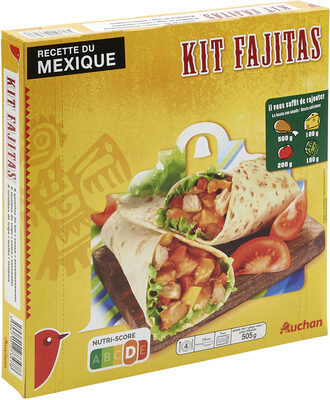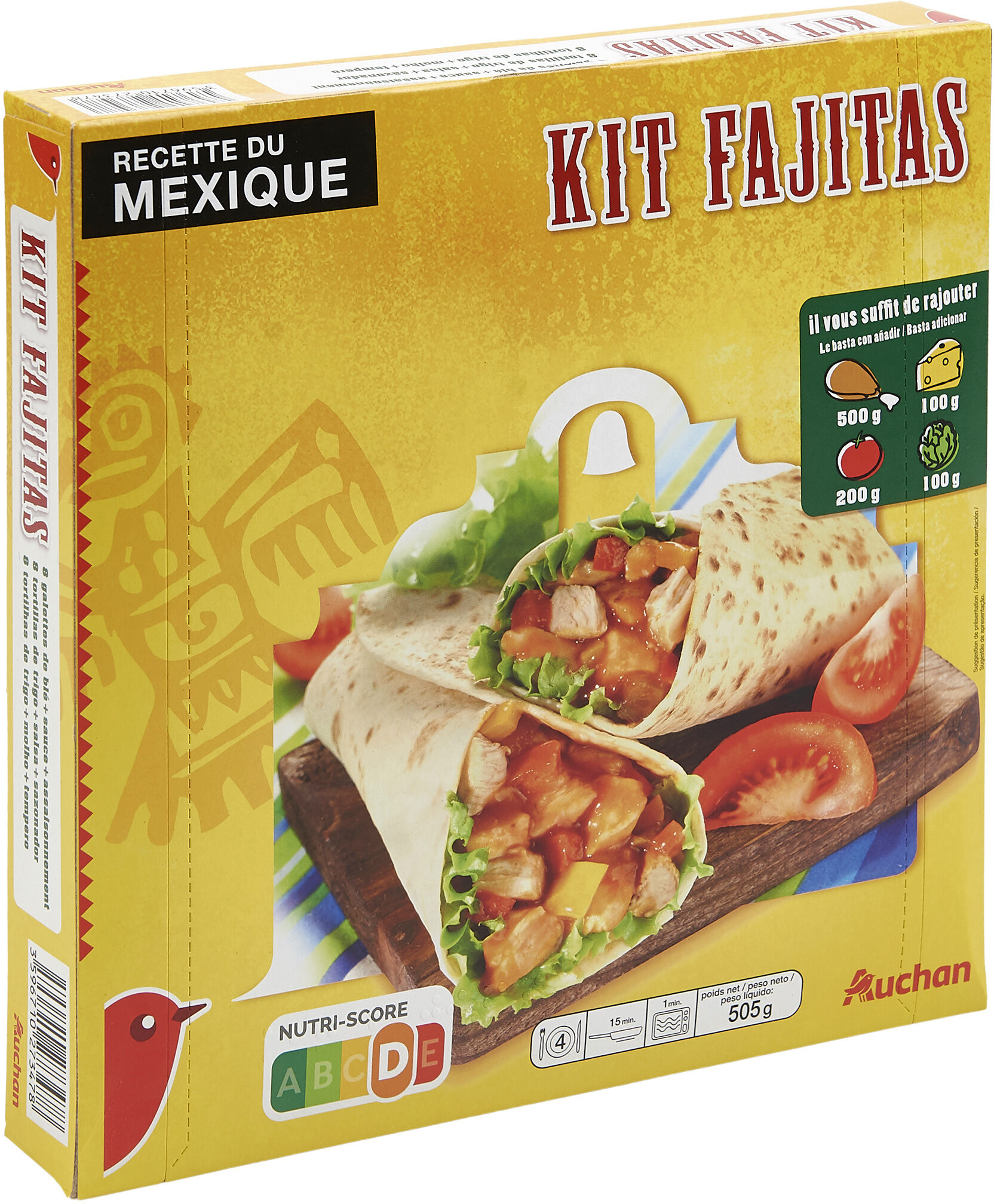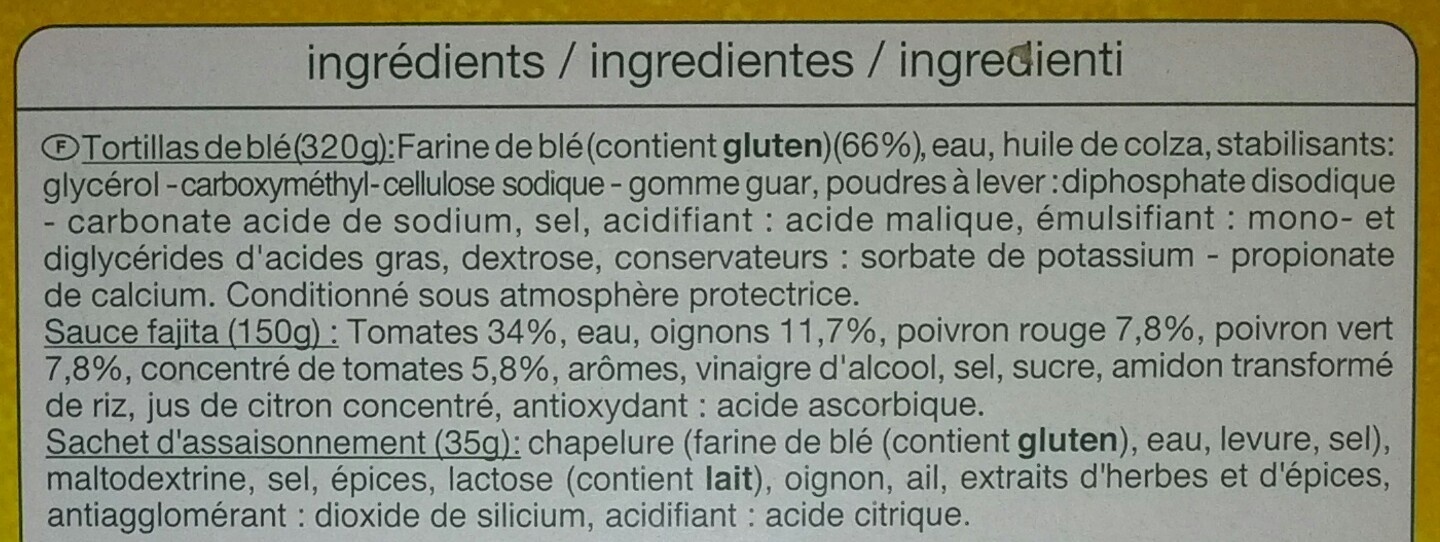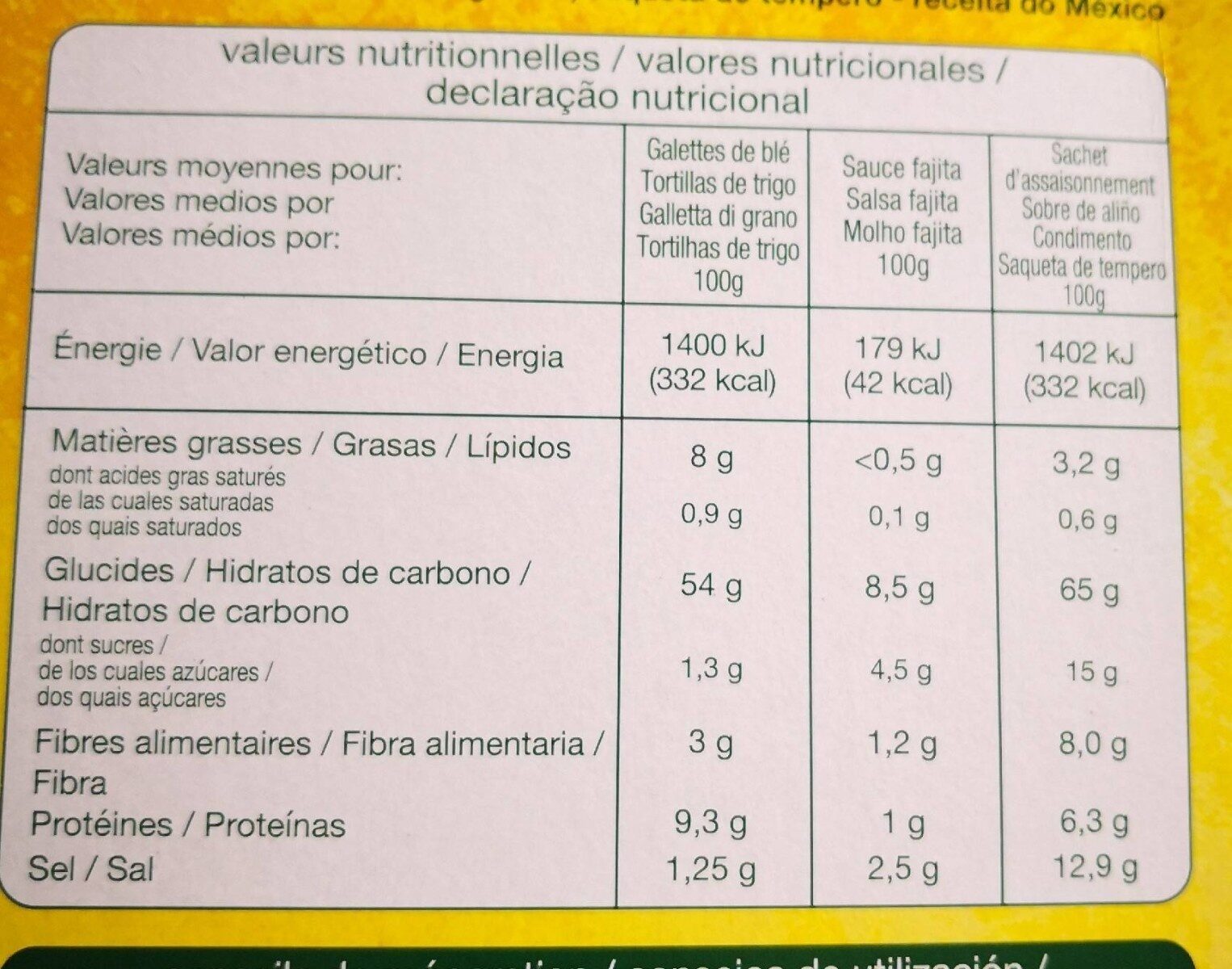Kit fajitas 8 galettes de blé + sauce + assaisonnement - Auchan - 0.505 kg
This product page is not complete. You can help to complete it by editing it and adding more data from the photos we have, or by taking more photos using the app for Android or iPhone/iPad. Thank you!
×
Some of the data for this product has been provided directly by the manufacturer AUCHAN APAW.
Barcode: 3596710273478 (EAN / EAN-13)
Common name: Kit avec galettes de blé, sauce à base de tomates et légumes et sachet d'assaisonnement
Quantity: 0.505 kg
Packaging: Box
Brands: Auchan
Categories: Meal kits, Fajitas kits
Labels, certifications, awards: Nutriscore, Nutriscore Grade C, Nutriscore Grade D
Stores: Auchan
Matching with your preferences
Environment
Packaging
Transportation
Other information
Preparation: :Ingrédients à ajouter (pour 4 personnes) : 500g de viande (boeuf hachée, agneau ou poulet émincé), 100g de salade finement coupée, 200g dés de tomates concasées,100g de fromage râpé, 100g de maïs en grains, crème fraîche (facultatif).Préparation : faites revenir quelques instants la viande (boeuf hachée, agneau ou poulet émincé) dans une poêle et dégraissez. Tout en remuant, ajoutez le contenu du sachet d'assaisonnement, 100ml d'eau et la sauce Fajita. Portez à ébullition, réduisez la température et laissez mijoter pendant 5 à 10 minutes en remuant de temps à autre. Les Tortillas : réchauffez les 8 tortillas recouvertes d'un film plastique 1 minute au four micro-ondes à 750 W ou dans u four préchauffé à 200°C ou une à une quelques secondes à la poêle.A table : répartissez la garniture dans les tortillas chaudes, décorez selon votre convenance avec la salade, les tomates et le fromage râpé. Vous pouvez également ajouter de la crème fraîche ou du guacamole. Pliez la tortilla comme présentée sur cette fiche. Bon appétit.
Conservation conditions: Craint la chaleur et l'humidité
Report a problem
Data sources
The manufacturer AUCHAN APAW uses Agena3000 to automatically transmit data and photos for its products.
Product added on by alex-209
Last edit of product page on by foodvisor.
Product page also edited by date-limite-app, isabel626, kiliweb, org-auchan-apaw, packbot, roboto-app, rosy182, yuka.K79wFoKME5MhPMrjyK0t_TjrK8DlP8QFNCcWog, yuka.sY2b0xO6T85zoF3NwEKvlksXcdju-ADkLwXTtVSN7_CpD6PNa9Rp4bn3Kag, yuka.sY2b0xO6T85zoF3NwEKvlnNMefPcrCnfFTP4t0HV4tOodJ-2Pvhyzav0Aas.











